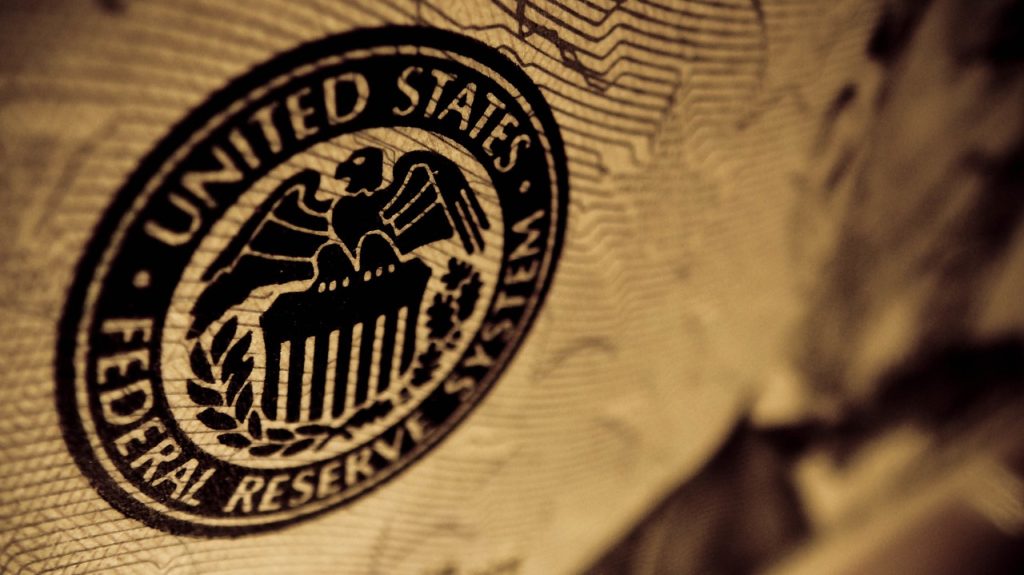Since When Is a Little Rate Hike Years From Now Hawkish?
Markets reacted strongly to what many considered “hawkish” messaging coming out of the June Federal Reserve meeting. But is the Fed really taking a “hawkish” position?
Peter Schiff said the Fed was engaging in a “no stick” monetary policy. And in his Friday Gold Wrap podcast, Mike Maharrey argued the Fed was a dove in hawks clothing, arguing we should look at the Fed’s actions, not the messaging.
Economist Doug Frenc asks a crucial question. Even if you take the Fed’s talk at face value, is a half-point interest rate hike in two years really “hawkish?”
Since when is forecasting a couple rate bumps two years from now considered hawkish to the point of making the dollar pop and gold flop?”
![]()
The following article by Doug French was originally published at the Mises Wire. The opinions expressed are the authors and don’t necessarily reflect those of Peter Schiff or SchiffGold.
The Fed announced the reportedly hawkish news that the central bank may raise rates, not this year, not next year, but by fifty basis points sometime in 2023. This tapering would slow the Fed’s buying of $120 billion of debt securities a month with money created from the ether to some lesser amount.
People forget the central bank “kept its benchmark rate on hold for a 10th straight meeting after sweeping into emergency action amid the coronavirus pandemic in March of last year with a full percentage-point cut.” Yet again emergency government action has become permanent.
This news sent the dollar screaming upward, with the DXY jumping from 90.54 to 92.32 at week’s end. The price of gold was, of course, bludgeoned. The yellow metal dropped 6.5 percent over the next five days. The ten-year Treasury bond finished the week at a paltry 1.44 percent. Meanwhile, financial basket case Greece saw its ten-year rate finish at seventy-nine basis points.
Making no news was Lyn Alden’s tweet that the Federal Reserve’s balance sheet crossed $8 trillion in assets. Fed watcher Alden followed this with the news, “Reverse repos jumped $235 billion today to $755 billion.”
Chairman Powell didn’t articulate what the Fed will do; the financial press deciphered it this way, per Bloomberg: “The Federal Reserve’s so-called dot plot, which the U.S. central bank uses to signal its outlook for the path of interest rates, shows that officials expect no change in policy this year, while leaning toward two rate increases by the end of 2023, based on median estimates.”
Does this make sense? Free markets at work? Logical price discovery? After all, as Murray Rothbard explained, “Since the investment is always in anticipation of later sale, the investors are also engaged in entrepreneurship, in enterprise.”
Since when is forecasting a couple of rate bumps two years from now considered hawkish to the point of making the dollar pop and gold flop?
Since it’s a Keynesian world, rather than an Austrian one, Lord Keynes reminds us, “The market can stay irrational longer than you can stay solvent.”
Another point of view is “I’m looking at the gold market right now and I think this could prove to be a good time to buy,” George Milling-Stanley, chief gold strategist at State Street Global Advisors, said. “I see a lot of panic selling and I don’t think that can last much longer. Basically, the markets saw higher inflation and higher interest rates, but they completely ignored the fact that the hikes are at least two years away. A lot can happen in two years.”
Milling-Stanley has a long enough memory to make the point, “the last time that the Fed was actually in a rate tightening mode was between December of 2015 and December of 2018, so gold should have gone down. But it went from $1,050 in December of 2015 to $1,270 by December of 2018. So gold went up 21% in those three years, even though rates were raised nine times.”
Keynes pointed out, “For it is, so to speak, a game of Snap, of Old Maid, of Musical Chairs—a pastime in which he is victor who says Snap neither too soon nor too late, who passed the Old Maid to his neighbour before the game is over, who secures a chair for himself when the music stops. These games can be played with zest and enjoyment, though all the players know that it is the Old Maid which is circulating, or that when the music stops some of the players will find themselves unseated.”
While Keynes viewed speculation as a game, Rothbard viewed it more seriously. “Entrepreneurship is also the dominant characteristic of buyers and sellers who act speculatively, who specialize in anticipating higher or lower prices in the future. Their entire action consists in attempts to anticipate future market prices, and their success depends on how accurate or erroneous their forecasts are.”
Nobody can say for sure the Fed will taper or increase rates. And just because the Fed’s inflation has forced us all to learn to pump our own gas and scan our groceries, not many have the entrepreneurial savvy to invest properly to fund retirement.
With the eight hundred–pound Fed in the markets, finding a chair and forecasting accurately may be next to impossible.





 Cocoa prices have dumped since rocketing to a dramatic peak last month as an El Nino cycle winds down and traders rush out of the illiquid market. For now, depreciating fiat currencies are still keeping the cocoa price still far above its 2023 levels. Coffee has had a similar rise and subsequent correction — but now, inflation and other factors are conspiring to […]
Cocoa prices have dumped since rocketing to a dramatic peak last month as an El Nino cycle winds down and traders rush out of the illiquid market. For now, depreciating fiat currencies are still keeping the cocoa price still far above its 2023 levels. Coffee has had a similar rise and subsequent correction — but now, inflation and other factors are conspiring to […] California’s government bet that they knew better than the free market. And now millions are paying the price. The story begins in 1919, when the city of Berkley, California instituted legislation setting aside districts that would only allow the construction of single-family housing. The idea spread, and soon much of California’s urban areas had adopted the zoning policy. Today, approximately 40% of the total land in Los Angeles is […]
California’s government bet that they knew better than the free market. And now millions are paying the price. The story begins in 1919, when the city of Berkley, California instituted legislation setting aside districts that would only allow the construction of single-family housing. The idea spread, and soon much of California’s urban areas had adopted the zoning policy. Today, approximately 40% of the total land in Los Angeles is […] The yen was once known as a safe-haven currency for investors to protect themselves when broader markets are shaky or other currencies are dropping, but those days are numbered. A stable government and consistent (and low) interest rates have been some of the driving factors, but it’s the unwinding of that ultra-low interest rate policy that will be the yen’s “safe […]
The yen was once known as a safe-haven currency for investors to protect themselves when broader markets are shaky or other currencies are dropping, but those days are numbered. A stable government and consistent (and low) interest rates have been some of the driving factors, but it’s the unwinding of that ultra-low interest rate policy that will be the yen’s “safe […] Whenever an election year rolls around, domestic manufacturing becomes a more central theme of discussion. Candidates from both sides, who seem to disagree on almost everything else, never waver in their commitment to auto manufacturers in Detroit and the steel industry. Republicans and Democrats never forget to remind the American public that they will try […]
Whenever an election year rolls around, domestic manufacturing becomes a more central theme of discussion. Candidates from both sides, who seem to disagree on almost everything else, never waver in their commitment to auto manufacturers in Detroit and the steel industry. Republicans and Democrats never forget to remind the American public that they will try […] The wizards at the Fed and US Treasury have been forced to acknowledge that their “transitory,” inflation is, in fact, quite “sticky.” And with the inflation elephant now acknowledged by the circus of high finance, Treasury yields keep inching up, recently reaching 4.7% — the highest since November. The Fed is stuck: It needs to raise interest rates to tame inflation and […]
The wizards at the Fed and US Treasury have been forced to acknowledge that their “transitory,” inflation is, in fact, quite “sticky.” And with the inflation elephant now acknowledged by the circus of high finance, Treasury yields keep inching up, recently reaching 4.7% — the highest since November. The Fed is stuck: It needs to raise interest rates to tame inflation and […]